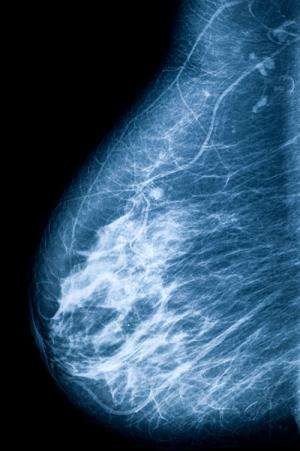Breast cancer research shapes prevention policy with leading US health body

A ground-breaking resolution developed by University of Stirling academics on the elevated breast cancer risk faced by women in certain occupations has been adopted by the influential American Public Health Association (APHA), the largest public health organization in the world.
Dr James Brophy and Dr Margaret Keith of the University of Stirling's Occupational and Environmental Health Research Group (OEHRG) were involved as initiators and co-authors of the resolution, entitled Breast Cancer and Occupation: A Need for Action.
The adoption of the resolution by APHA is a significant step in public health policy, highlighting the importance of primary prevention and renewed commitment to occupational health research in the United Kingdom and North America, where breast cancer rates are among the highest in the world.
Dr Brophy said: "Breast cancer is the most prevalent cancer in women across the globe but the majority of women do not have the known or suspected risk factors, therefore more attention to the exposures and hazards faced by women at work is required."
Many research and funding agencies still ignore or downplay the role of occupational studies despite their relevance to prevention efforts.
Previous international studies have found several occupational sectors in which there was elevated breast cancer risk, including metalworking, bars and gambling workplaces and the manufacture of tinned food, rubber and plastics.
Dr Brophy said: "Until recently, women's occupational health hazards continued to be mostly invisible, studied inadequately and infrequently despite women's long-time participation in the workforce. This lack of gender perspective, and hence gender bias comes at a price: working women's health."
APHA supports the use of the precautionary principle, including taking action in the face of scientific uncertainty on cancers such work-related breast cancer. However Stirling academics believe that but UK agencies all too often ignore such an approach.
Previous research has identified commonly used chemicals that induce breast tumours in test animals. Animal studies link chemicals that mimic hormones – called endocrine-disrupting chemicals (EDCs) - to elevated breast cancer rates.
The World Health Organization, the European Union and the Endocrine Society have all issued major reports on the potential harm caused by EDCs. According to the Endocrine Society, the significant increase in the incidence of breast cancer in the industrialized world over the past 50 years may be due to "hormonally active chemicals".
Professor Andrew Watterson, also of Stirling's OEHRG, said: "UK industries, professional bodies and regulators have often been slow to act in dealing with hazards and risks linked to occupational breast cancer and other cancers.
"Reputable researchers have recently estimated that there are around 2000 new registrations of breast cancer in women every year and around 550 deaths in Great Britain due primarily to work-related breast cancer linked to night shift working alone.
"The APHA report identifies many other substances and processes linked to breast cancer that would indicate the Great Britain morbidity and mortality rate will be far higher from this preventable cause of disease.
"It is hoped that within the UK, public health bodies will follow the initiative taken by APHA on occupational cancer prevention generally and occupational breast cancer in particular."
Helen Lynn, Co-ordinator of the Alliance for Cancer Prevention which campaigns on workplace and environmental cancer prevention, said: "We welcome the APHA policy and want to see bodies such as Public Health England follow suit. Organisations like Public Health England and the Health and Safety Executive (HSE) do women a gross disservice by not acknowledging that EDCs can harm at extremely low doses in the workplace and beyond and therefore cannot be regulated and must be banned.
"We now know that the safest exposure to EDCs is no exposure. The HSE must follow suit with urgent action on shift work. We want to see a commitment to valuing women's lives and to following the ground-breaking example set by the APHA."
Along with Professor Andrew Watterson of the University of Stirling's OEHRG, Dr Brophy and Dr Keith were a part of an international team of researchers who conducted a major award-winning 2012 study that investigated the link between breast cancer rates and occupation among women.















